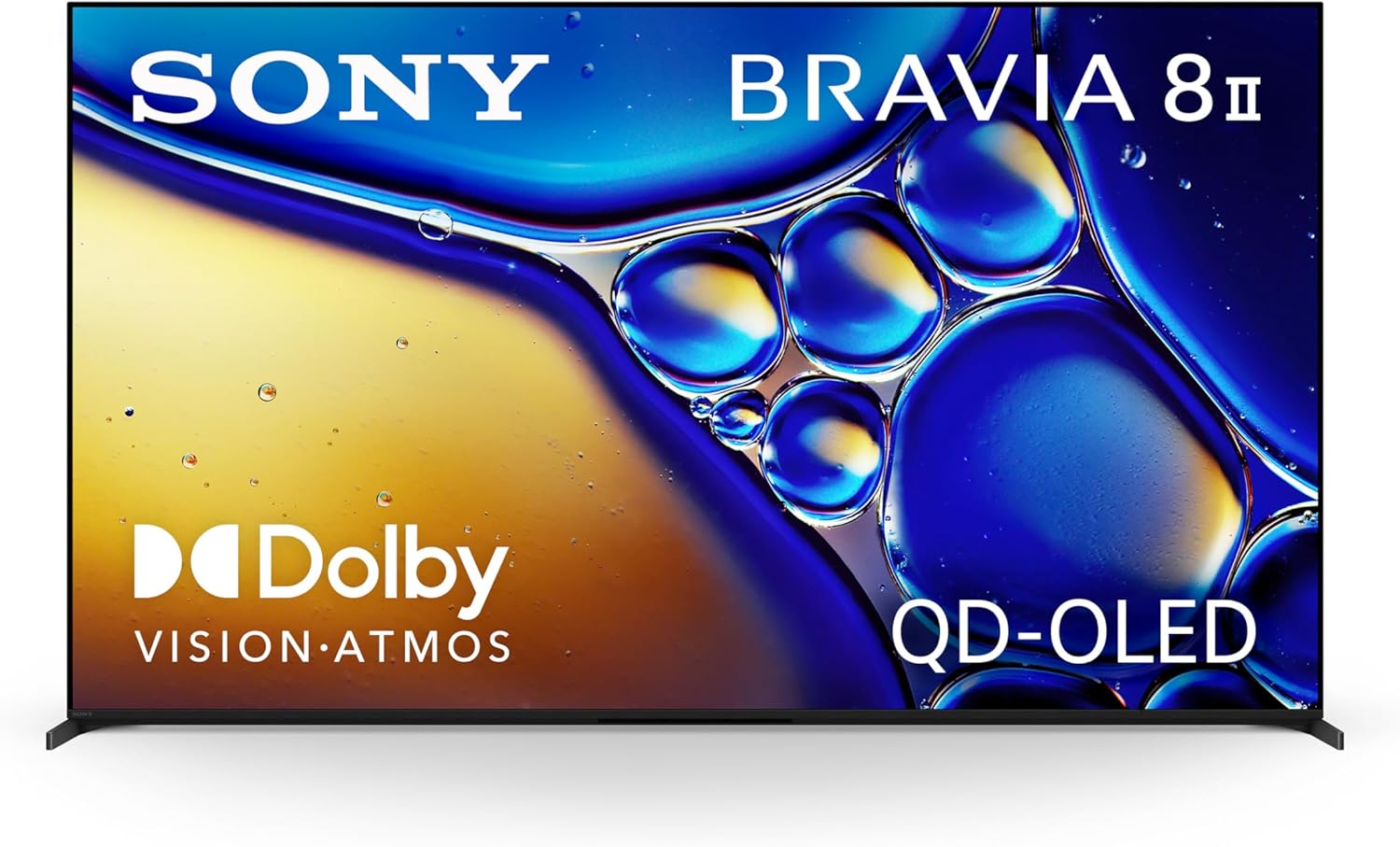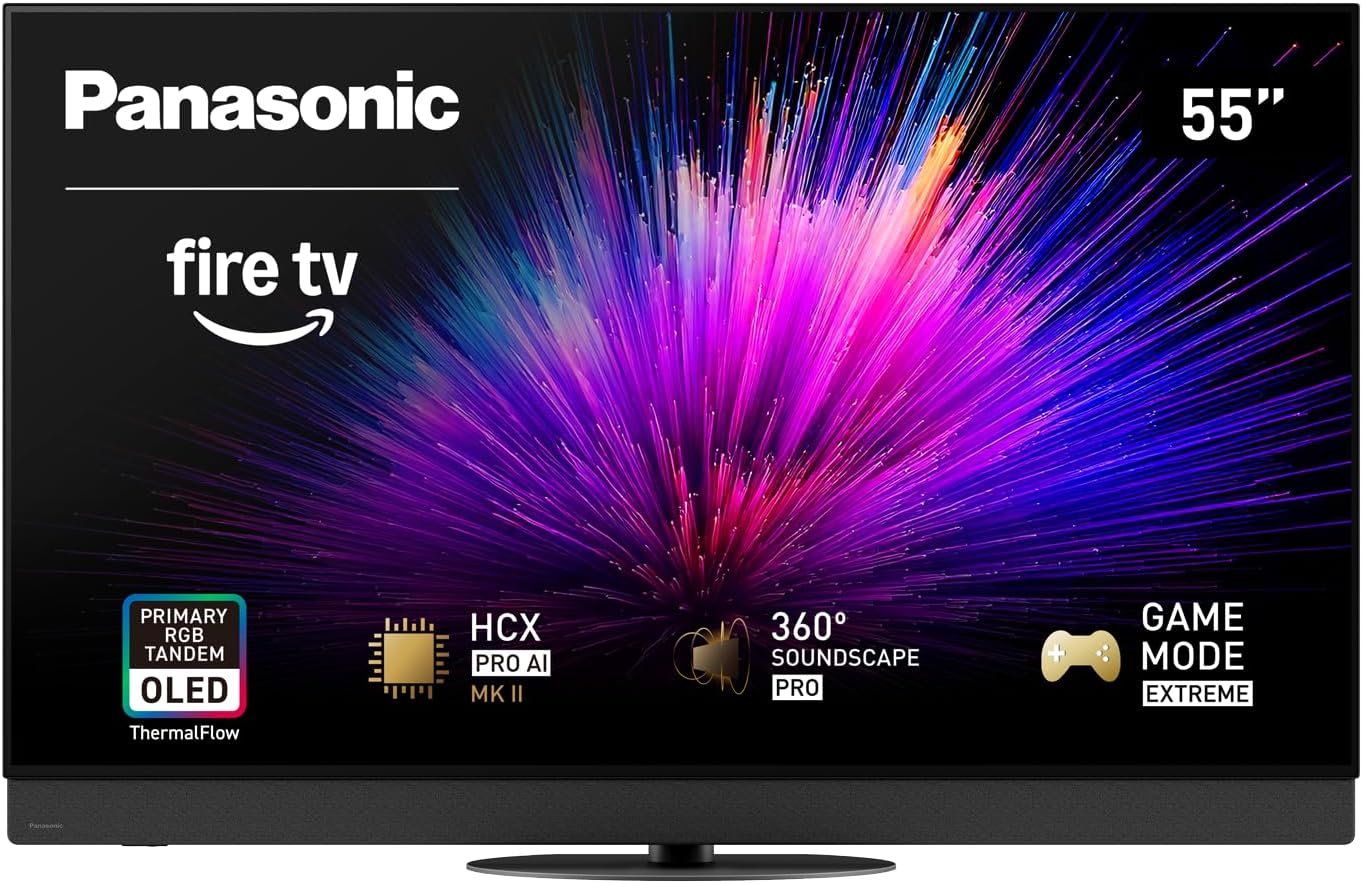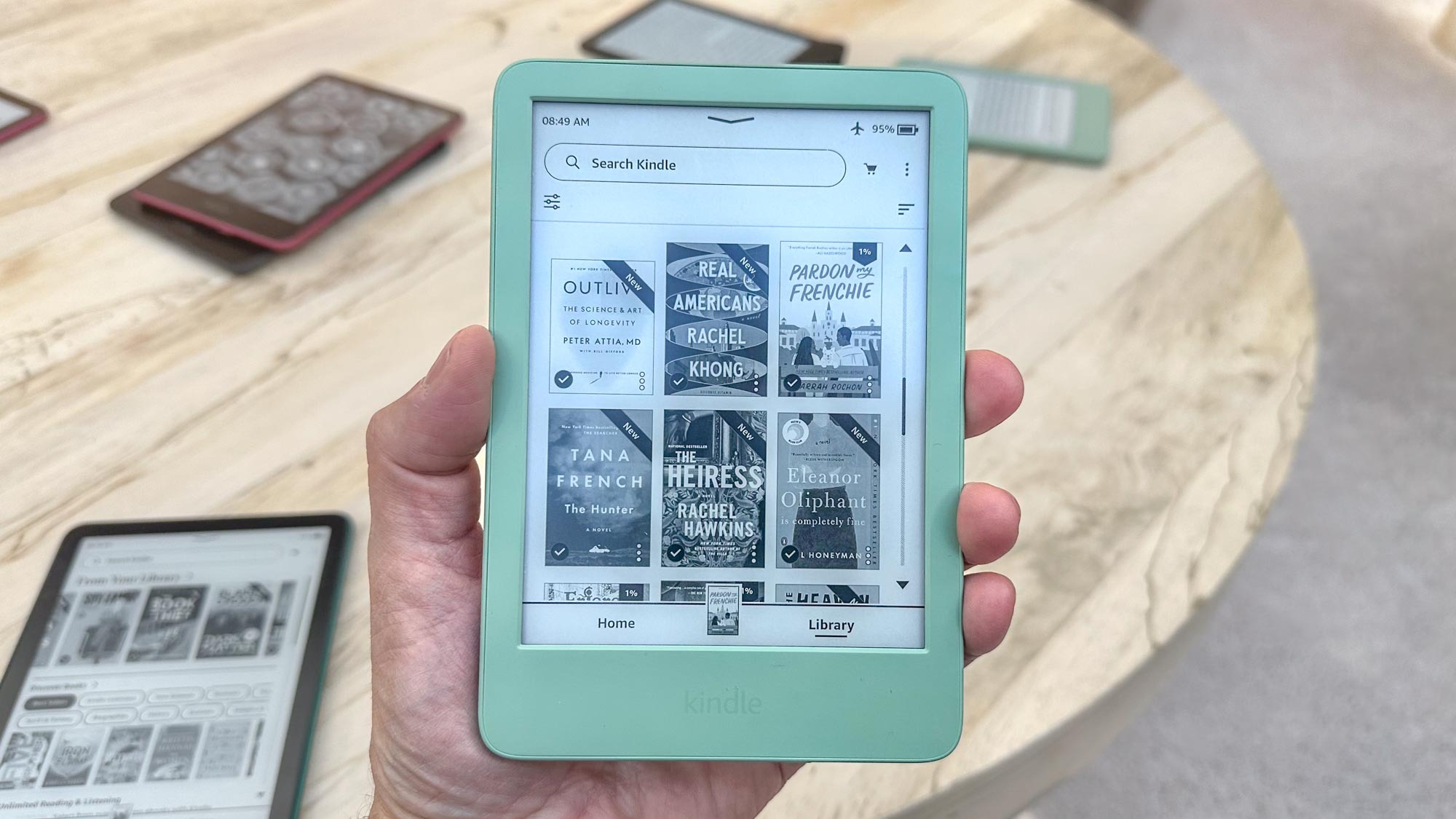Sony Bravia 8 II vs Panasonic Z95B: Which OLED TV wins?
Two Japanese brands known for cinematic excellence go toe-to-toe in a flagship OLED faceoff
It's no secret that last year's Panasonic Z95A was one of my favorite OLED TVs, and Panasonic has gone above and beyond in improving its successor: The Panasonic Z95B OLED TV continues to use Amazon's Fire TV but improves its color accuracy, HDR performance, and even its audio.
However, it's not without serious competition. Crowned the King of OLED TVs, the Sony Bravia 8 II is an exciting upgrade over the Bravia XR A95L. It covers a whopping 100% of the UHDA-P3 gamut and offers incredible off-axis viewing as well as a remarkable sound stage of its own.
So which flagship OLED TV should you buy, and which among them can truly be crowned the best OLED TV of 2025?
Sony Bravia 8 II vs Panasonic Z95B: Specs compared
| Header Cell - Column 0 | Sony Bravia 8 II | Panasonic Z95B |
|---|---|---|
Sizes | 55", 65" | 55", 65", 77", 83" |
Ports | 2x HDMI 2.1 | 2x HDMI 2.1 |
Resolution | 3,840 x 2,160p | 3,840 x 2,160p |
Refresh rate | 120Hz | 144Hz |
HDR | Dolby Vision, HDR10, HLG | Dolby Vision, HDR10, HDR10+, HLG |
Smart TV software | Google TV | Fire TV |
ATSC 3.0 support? | Yes | Yes |
Processor | XR AI Processor | HCX Pro AI Processor MK II |
Sony Bravia 8 II vs Panasonic Z95B: Design
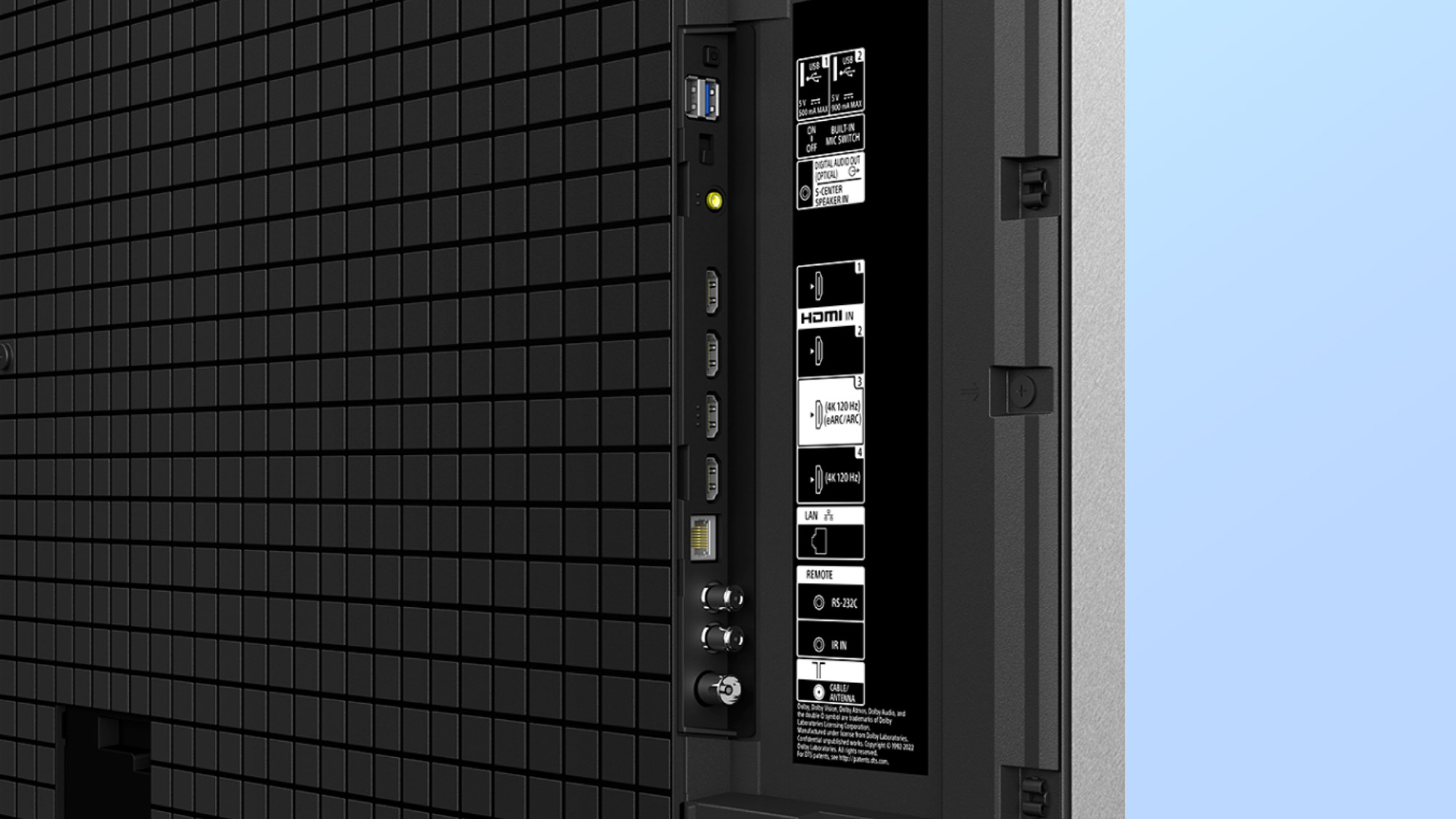
Overall, both flagship OLED TVs are slender TVs, with the 65-inch models measuring 2.1 inches for the Z95B and the 1.3 inches for the Bravia 8 II. The bezels on the Bravia 8 II are far less noticeable than those on the Z95B, as the Panasonic OLED has a hefty speaker placed at the bottom of the screen.
The Z95B follows in the same footsteps as its predecessor, designed with an absurd speaker system that boasts a 5.1.2-channel array on a 160W output. It incorporates two side-firing speakers, as well as an upward-firing speaker and front line array for serious audio performance.
The Sony Bravia 8 II doesn't actually have speakers, but uses actuators built into the screen. Sound quality isn't quite as full as the Z95B, but they do offer a notably immersive experience. The system can deliver up to 50W of total power and is based on a 2.1-channel design. What stands out is Sony's Acoustic Surface Audio+, which allows sounds from the TV to feel more realistic, as if they're truly bouncing from the screen.
The Bravia 8 II is equipped with two sturdy legs as stands, unlike most of its counterparts, which often come with pedestals. Case in point is the Z95B, which has a metal base that can fit snugly on practically any surface.
Get instant access to breaking news, the hottest reviews, great deals and helpful tips.
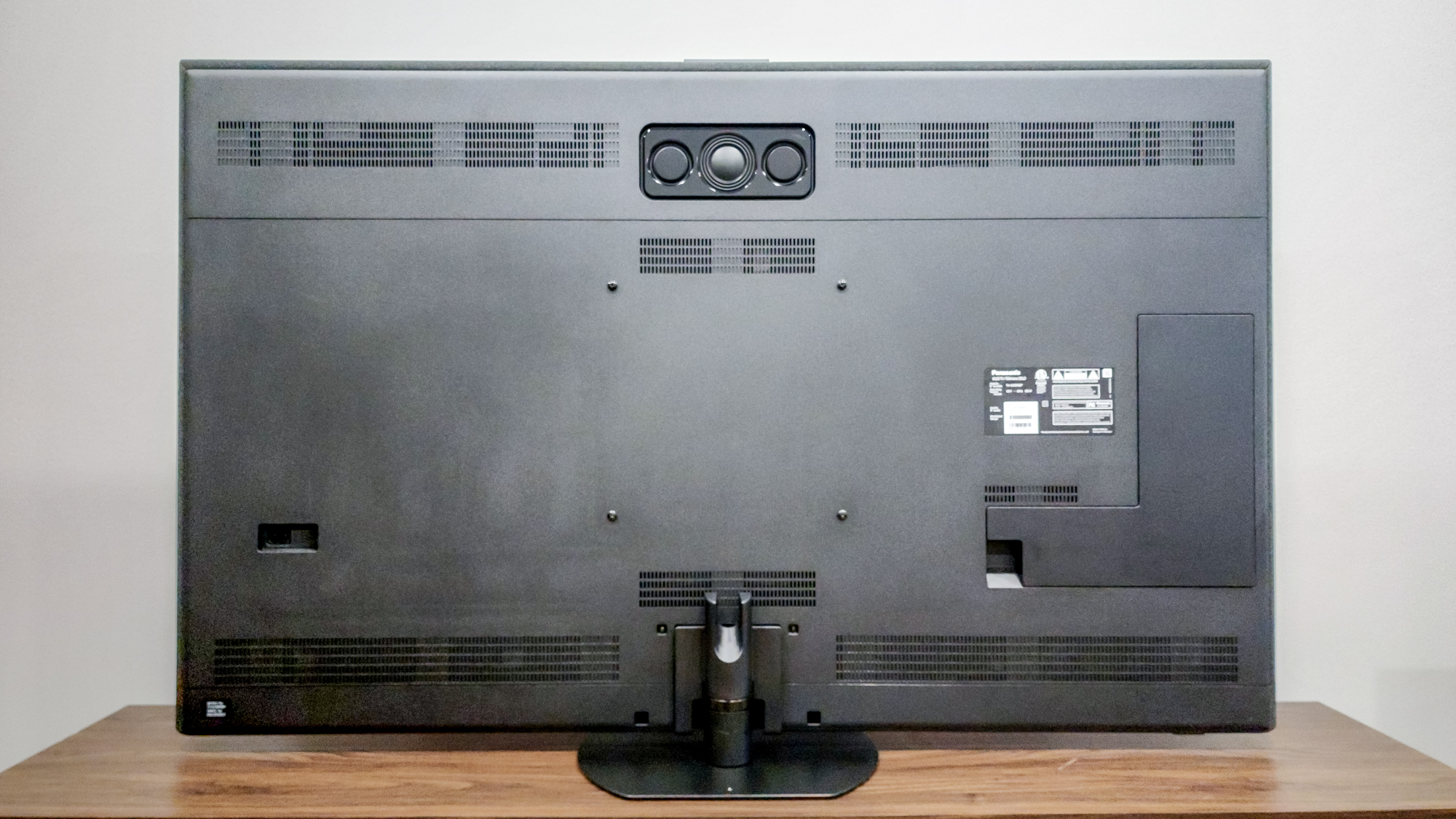
In terms of internal design, the Panasonic Z95B is particularly special as it's equipped with several new technologies, like a revamped airflow system and LG's four-stack OLED panel. These advancements give the Z95B a more advanced look and feel, which is reflected in the metrics we tested in our lab.
Panasonic took inspiration from Formula 1 cars in designing its new air flow system. Called ThermalFlow, the design feature pushes air through the top and bottom of the display to keep the screen cool, reducing the chance of overheating.
The Z95B also dropped the WOLED panel used on its predecessor in favor of LG's (rather wordy) Primary RGB Tandem technology, which essentially stacks four OLED-emitting layers for more efficient color volume and brightness. As you'll see below, these technological advancements give the Panasonic Z95B a leg up in its performance.
Meanwhile, the Sony Bravia 8 II uses a next-generation QD-OLED panel. This type of panel offers improved color control and volume, thanks to its quantum dots, as well as the enhanced contrasts offered via self-emitting pixels of OLED panels.
Ultimately, the Panasonic Z95B appears far more advanced when you consider its newer features and specifications. It also serves as one of the only TVs in the industry that takes audio seriously, which I commend.
Winner: Panasonic Z95B
Sony Bravia 8 II vs Panasonic Z95B: Performance
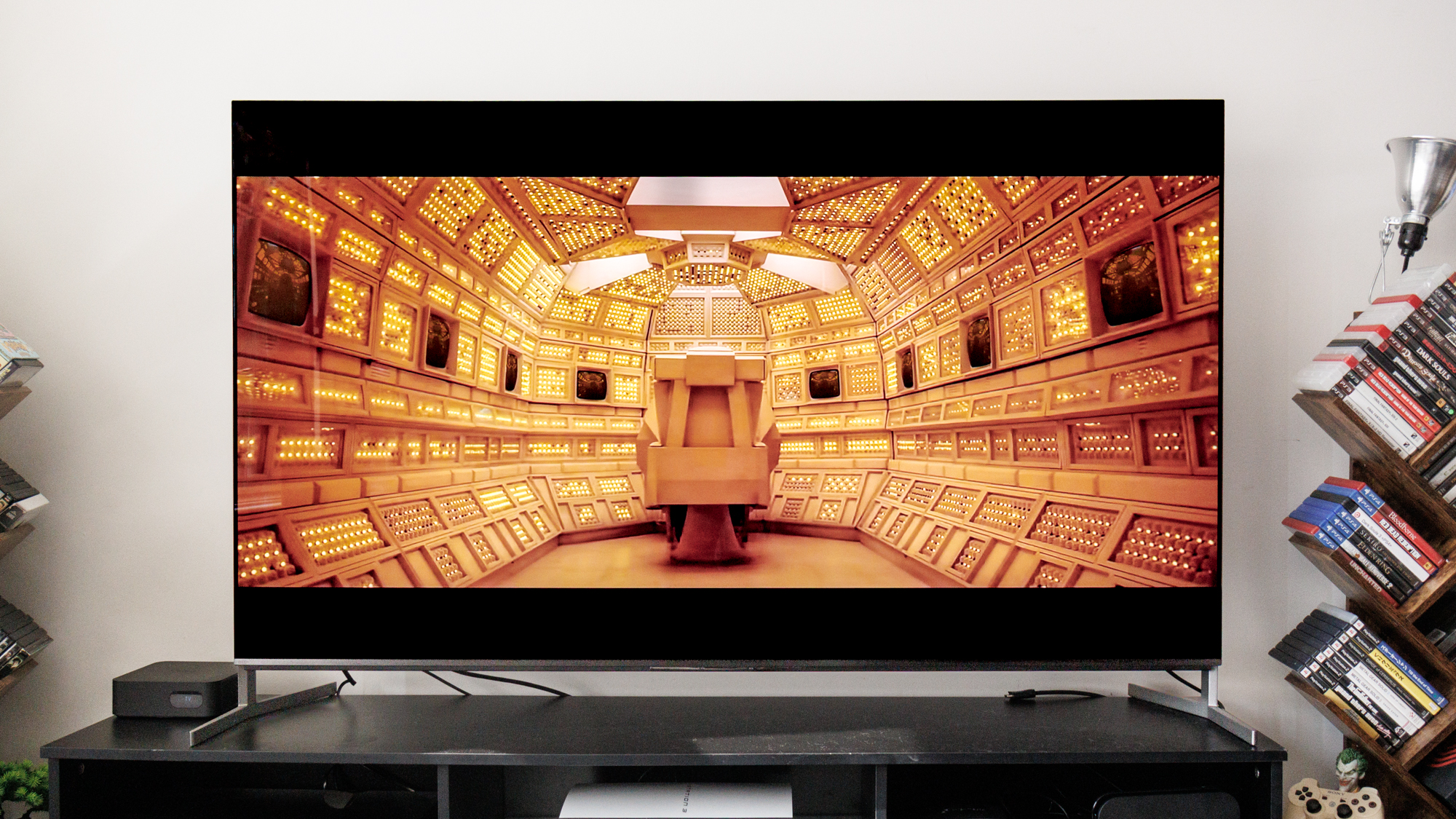
| Header Cell - Column 0 | Sony Bravia 8 II | Panasonic Z95B |
|---|---|---|
SDR Brightness (10%, in nits) | 270 | 217 |
Delta-E (lower is better) | 3.5 | 1.3 |
HDR Brightness (10%, in nits) | 1,633 | 1,859 |
UHDA-P3 Gamut Coverage | 100% | 99.77% |
Rec. 2020 Gamut Coverage | 90.55% | 81.42% |
Input latency (milliseconds) | 16.3 | 12.7 |
Here's where things get interesting. The Panasonic Z95B and Bravia 8 II share somewhat similar metrics as tested in our labs. The Bravia 8 II has slightly better SDR luminance and covers a bit more of the Rec2020 gamut, but it seriously lacks in color accuracy.
That's a major downside, especially considering it covers 100% of the UHDA-P3 gamut, one of only two TVs this year to command that much coverage. This means that you won't actually get realistic or lifelike colors in HDR movies, even when the Bravia 8 II can hit the full array, and that's a major bummer.
While the Panasonic Z95B doesn't match the Bravia 8 II in color coverage, it was tested with much better color accuracy, hitting a Delta-E of 1.3. Since a lower Delta-E score represents closer reproduction, the Z95B can spit out more precise and natural colors.
The Z95B also has better HDR luminance. It only exceeds the Bravia 8 II by a little over 200 nits in this category, but that's a solid win if you're planning on using the TV in an environment with lots of ambient light.
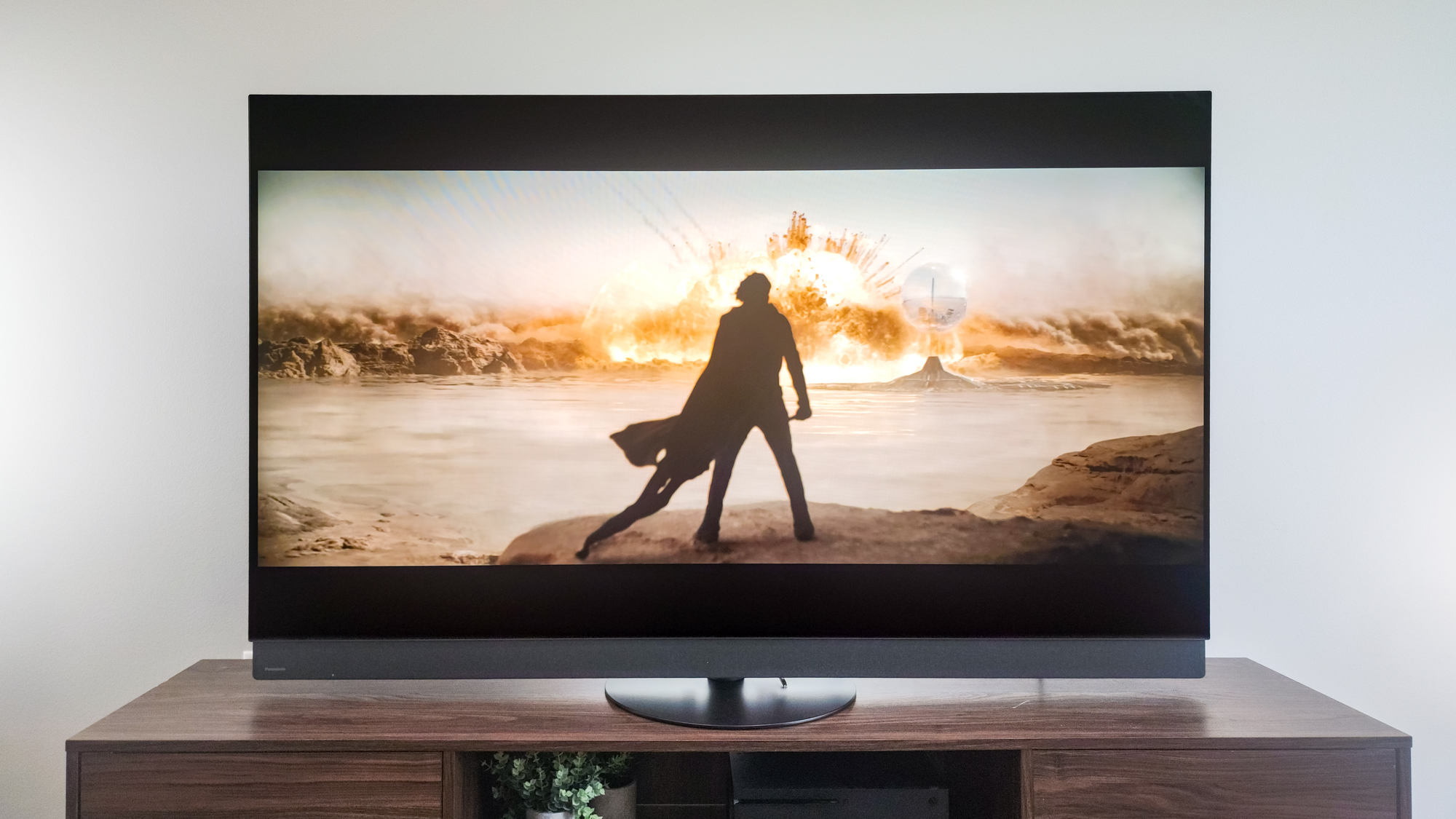
In Filmmaker mode, the Panasonic Z95B is even brighter, spitting out 2,262 nits with the luminance set to 100. (Panasonic lowers the luminance in HDR, which requires some settings adjustments.) The Bravia 8 II actually performed worse in the same mode, hitting just 1,584 nits in the same picture mode, called "Cinema."
While these TVs didn't perform adequately in our gaming performance tests, given their high input latency, they do still offer a robust set of features for the pastime. The Bravia 8 II, in particular, is equipped with PS5-exclusive features, while the Z95B has an extensive gaming hub.
As a counter to the Sony OLED's native 120Hz refresh rate, the Z95B bumps that to 144Hz. The higher number is only realistically useable for PC gamers looking to eke out a bit more performance, but it also doesn't quite match competitors that are now equipped with 165Hz, such as the Samsung S95F and LG G5 OLEDs.
Given its specs, you can expect the Panasonic Z95B to also outperform the Bravia 8 II in audio performance. The major difference is that you truly feel the sound. It's an immersive experience that can be personalized to your liking with Panasonic's 360 Soundscape Pro.
Although both OLED TVs look stunning in practice, the Z95B edges out the Sony Bravia 8 II with better color accuracy, brightness, and a wider sound stage.
Winner: Panasonic Z95B
Sony Bravia 8 II vs Panasonic Z95B: Smart platform and features
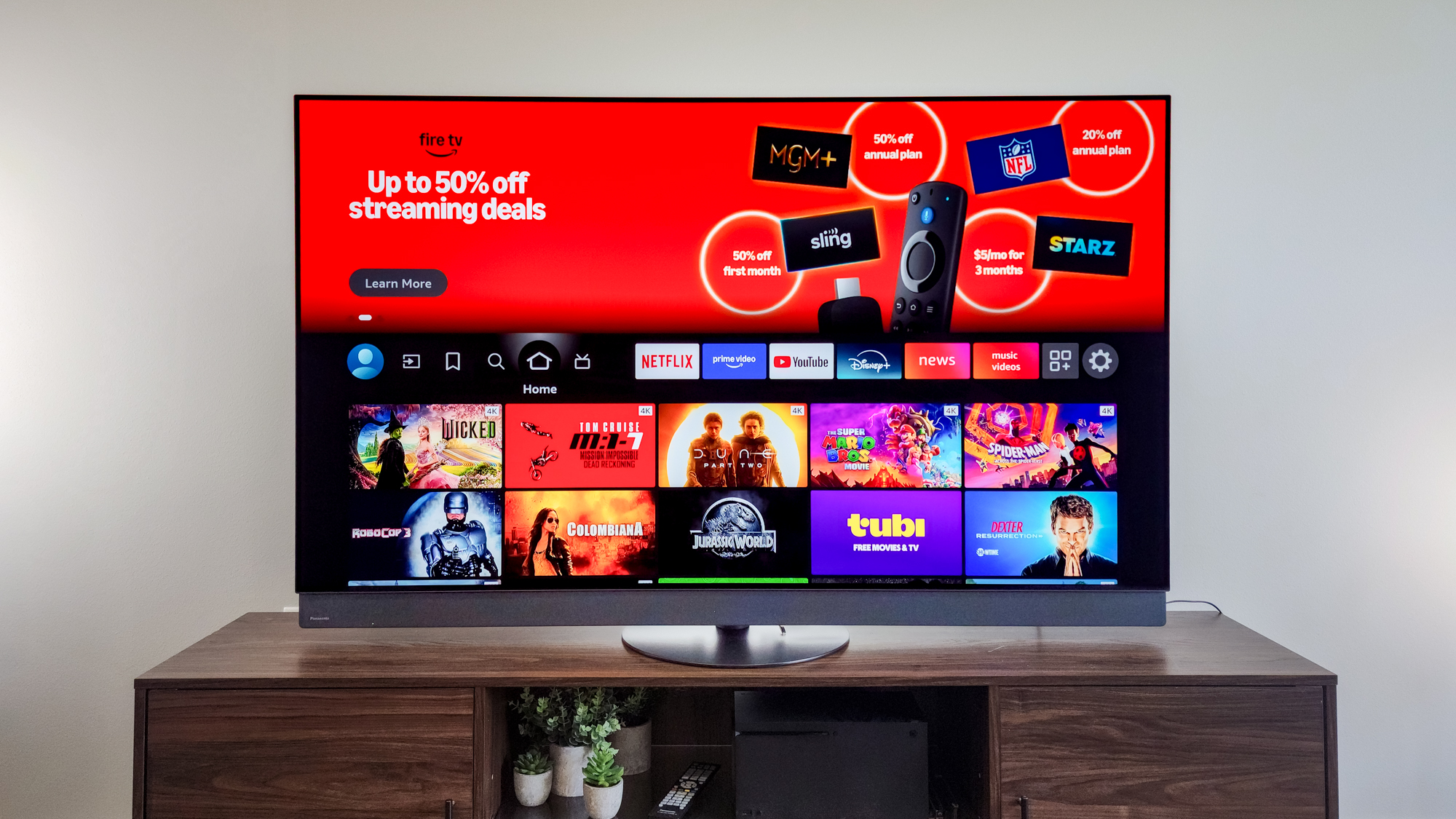
Both TVs have very different interfaces, with the Sony Bravia 8 II offering Google TV while the Panasonic Z95B uses Fire TV.
I tend to enjoy Google TV a bit more, given its ease of use and extensive search functionality. Google TV is also home to a ton of free channels you can dive into pretty easily, and it has one of the best voice assistants you can ask for in a TV.
From the moment you turn on your Google TV, it displays personalized recommendations, allowing you to easily keep up with all the shows you're watching.
Unfortunately, Google TV does have its fair share of ads, like other TV interfaces. It's definitely not as egregious as other platforms, but it is still something to consider. Privacy is also another concern on the Google platform, which is why I recommend turning off ACR in the setup process.
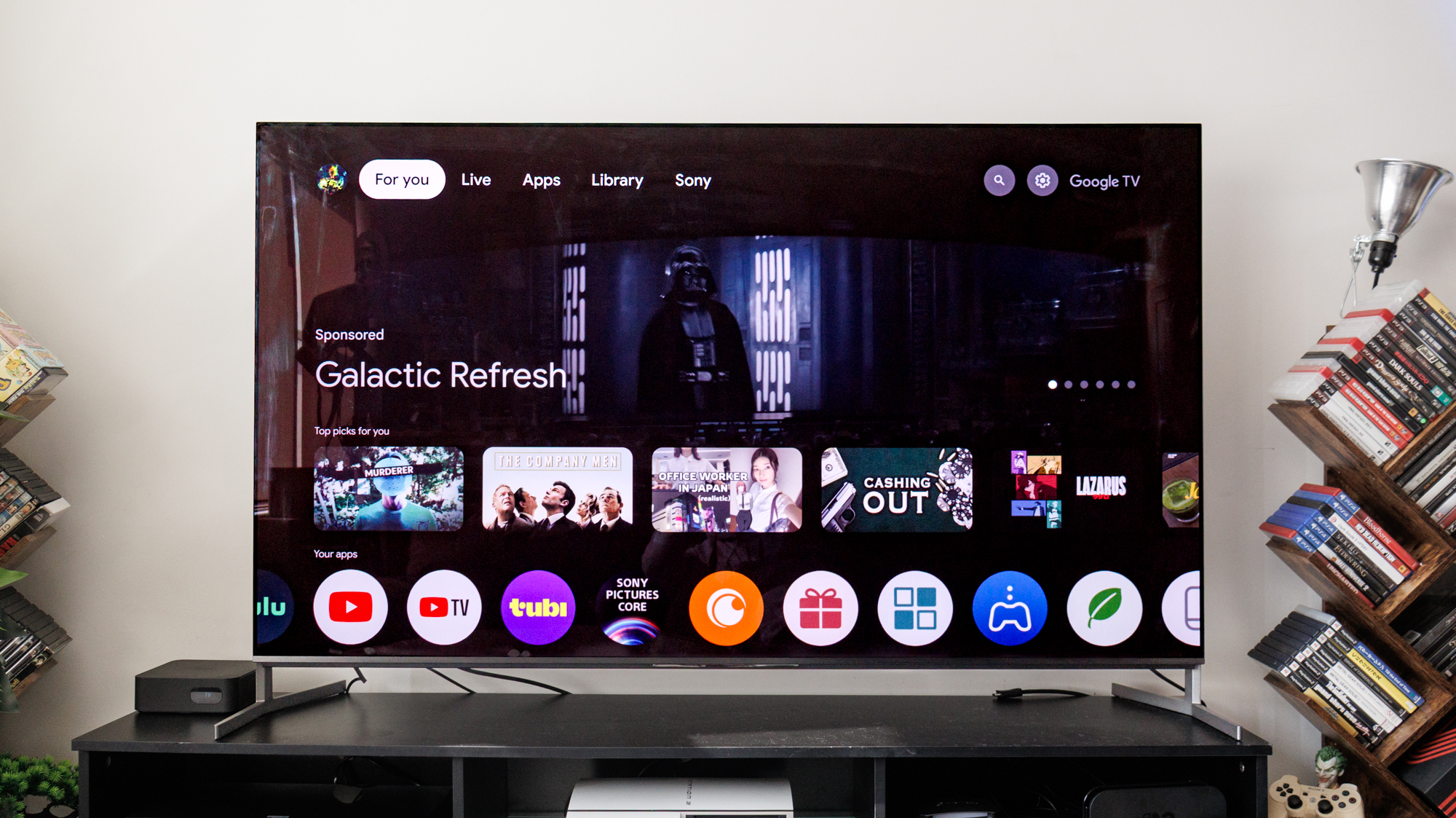
Although Fire TV isn't as streamlined as its Google TV counterpart, it does have personal recommendations and free TV channels to enjoy. However, Fire TV tends to skew its content recommendations within the Prime Video ecosystem, which isn't for everyone. Fire TV also gives the Z95B access to the Alexa voice assistant, which some users prefer over Google's version.
For gamers, Fire TV is home to several game streaming platforms, including Xbox Game Pass and GeForce Now. These services aren't available on Google TV. (If only Stadia still existed.)
Where OLED TVs fall short, such as LG and Samsung models, the Panasonic Z95B and Sony Bravia 8 II offer an ATSC 3.0 tuner, allowing you access to 4K broadcasts via NextGen TV. The Sony Bravia 8 II doesn't support HDR10+ like the Panasonic OLED, but it's still equipped with Dolby Vision and HDR10.
You can't go wrong with either OLED, but I think Google TV is the better choice. However, Fire TV has access to cloud gaming services, and that's nice to have if you don't already own a gaming console.
Winner: Tie
Sony Bravia 8 II vs Panasonic Z95B: Verdict
| Header Cell - Column 0 | Sony Bravia 8 II | Panasonic Z95B |
|---|---|---|
Specs (25) | 21 | 25 |
Design (25) | 24 | 25 |
Performance (25) | 23 | 24 |
Features (25) | 23 | 23 |
Total Score (100) | 91 | 97 |
The Panasonic Z95A was my favorite OLED TV in 2024, and the Z95B is quickly becoming my top pick of 2025. It has almost everything you could ask for in a premium OLED set: great brightness, incredible color accuracy and volume, plus a superb speaker system.
I still loved the picture performance on the Bravia 8 II. The metrics from our lab test don't give it enough credit, as the quality is cinematic. However, the Bravia 8 II lags behind its biggest competitors primarily in color accuracy and luminance.
The other thing holding the Bravia 8 II back is its limited features. It has too much in common with the older A95L and doesn't really feel like a true successor, offering the same number of HDMI 2.1 ports with a 120Hz refresh rate. There are little to no major advancements in its underlying specs, and that's hard to ignore.
Meanwhile, the Z95B took everything that was loved on its predecessor and dialed it to 11. It's a superb display worth the investment, offering incredible performance and features that enhance the content on-screen.
That's why it's one of the best TVs of the year.
More from Tom's Guide
- LG C5 OLED vs Samsung S90F: Which Mid-Range OLED TV is Right for You?
- I test TVs for a living — here are my 5 favorite OLED TVs for PS5 gaming
- This new TV breakthrough looks like a game-changer for OLED TVs

Ryan Epps is a Staff Writer under the TV/AV section at Tom's Guide focusing on TVs and projectors. When not researching PHOLEDs and writing about the next major innovation in the projector space, he's consuming random anime from the 90's, playing Dark Souls 3 again, or reading yet another Haruki Murakami novel.
You must confirm your public display name before commenting
Please logout and then login again, you will then be prompted to enter your display name.
